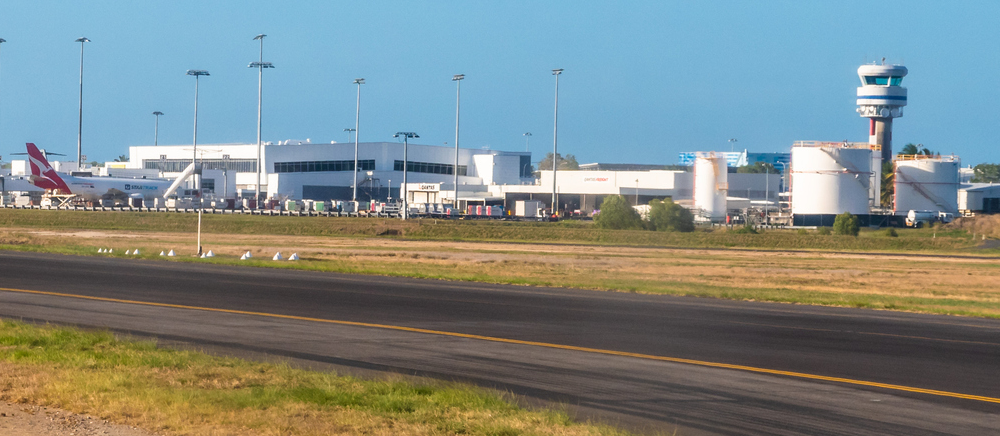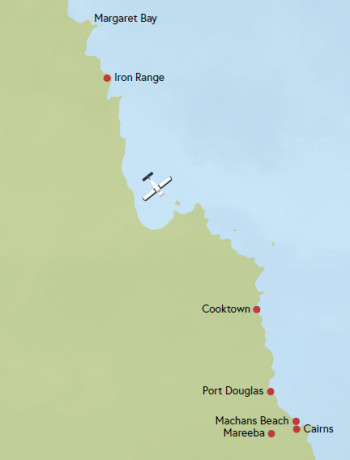
Dave Wiman
They may seem far removed from the cockpit, but air traffic controllers (ATCs) have skin in the game. If you don’t get home safely, they’re among those who never get over it.
Two decades on, Dave Wiman – now with Airways NZ – still has nightmares about the day a Cessna disappeared from the radar, after nearly hitting the Cairns Airport control tower, in which Dave was working.
It was a balmy late morning near the end of winter in the Queensland city, as Dave began his shift. Further north at Margaret Bay, a Cessna pilot was preparing for his more than three-hour flight to Cairns.
On board was a deckhand who’d severed his fingertip and needed to get into surgery as quickly as possible. Also being carried was a valuable cargo of live seafood.
The pilot was VFR only and had flown 515 hours in the previous year, including 35 hours of charter flying, mostly on short, local, scenic, and aerial work flights.
The weather was looking good. The Cairns terminal area forecast (TAF) predicted VMC with rain showers, but no deterioration until 2000 hours – well after the pilot’s planned daylight arrival at Cairns.
Take-off delayed
The pilot planned to leave Margaret Bay no later than 1500 hours, to make sure his ETA in Cairns was at least 10 minutes before civil twilight.
But cargo loading took longer than usual, and the pilot took off from Margaret Bay at 1520 hours, with an ETA in Cairns of 1835 hours – seven minutes after civil twilight – hoping to make up time on the way. Witnesses said he was visibly agitated about the delay, but that he was determined to get to Cairns.
Weather got worse
As the Cessna headed for Cairns, the TAF deteriorated to the point where it was no longer VMC.
En route, while flying over Cooktown, the pilot requested, and was given, the weather conditions at Mareeba, west of Cairns.
The pilot considered diverting to Mareeba but this didn’t offer a better alternative to Cairns.
A landing at Cooktown would have taken surface transport eight hours to get to Cairns. That would have delayed treatment for the injured passenger and risked the loss of the perishable cargo. So the pilot continued towards Cairns rather than landing at Cooktown.
About 45 minutes later, around 1815 hours, the pilot contacted Cairns approach control and revised his ETA to 1838 hours – 10 minutes after civil twilight.
“The weather was absolutely crap,” Dave Wiman says. “The last jet of the day from Brisbane landed and, around the same time, we heard the radio crackle with the Cessna pilot calling approach, about 50 miles to the north.
“That’s when my spidey senses started going off, and the hairs on the back of my neck stood up.”

Cairns airport and air traffic control tower. Photo: iStock.com/mauricallari
‘This doesn’t sound good’
“We knew this pilot was VFR-rated only. He was going to get here after dark. That made me think, ‘This doesn’t sound good’. We had thought he might land in Port Douglas to get on the ground before last light. But he carried on.”
At 1824 hours, four minutes before civil twilight, the pilot contacted Cairns approach again and reported he was 33 nautical miles north of Cairns – so close to his destination. He said he could see the coast, and confirmed he couldn’t fly IMC.
The visibility at the time of the pilot’s approach was about 1500 metres in heavy rain. The cloud base was 1100ft with lower patchy cloud, according to pilots flying IMC at the time.
The approach controller issued a clearance for the Cessna pilot to follow the coast, not above 1000 feet and to remain in VMC. ATC declared an uncertainty phase (code name INCERFA), used in situations where there’s uncertainty about the safety of an aircraft and its occupants.
They notified the rescue fire service, which dispatched two fire trucks north of Cairns as a precaution, to cover the approach path.
The approach controller gave the pilot cloud and visibility information, and distance and ground speed details. He offered the pilot radar headings to establish the aircraft clear of terrain and positioned the aircraft for an approach from over the water. The approach lighting was selected to maximum illumination.
To reduce the pilot’s workload, the tower issued a landing clearance via the approach controller.
First approach aborted

Map showing pilot’s route towards Cairns.
When the Cessna was almost overhead the airport, the pilot reported he couldn’t see the runway lights, so the approach controller instructed him to make a left turn for a second landing attempt.
During the turn, Dave watched in horror as the aircraft descended from 400ft to about 100ft. “He was in a dive towards the international apron, and there were aircraft there. I thought he was about to hit them.”
Concerned the Cessna was about to crash, Dave grabbed the telephone and hit the crash alarm.
“PULL UP! PULL UP! PULL UP!”
He could hear the approach controller urgently repeating the instruction to the pilot over the radio.
“Somehow, he didn’t crash.”
Approach control guided the pilot out over the water to settle him before putting him on a gentle turn to bring him back around for another approach.
Believing the lighting intensity may have been a factor, the control tower reduced the runway approach lighting to stage 3 (omni-directional runway lighting rather than uni-directional) to help the pilot find the lights.
Terrifying second approach
A second approach was attempted.
Dave says, “Once again, the aircraft lost altitude, but this time its landing lights were coming straight at me, on a collision course with the control tower.
“I didn’t move. I was thinking, ‘This is it’ – not because I thought I was going to die, but because my wife and baby daughter were waiting in the car park to pick me up from my shift, and I thought the plane would crash into them and they’d burn to death.”
Dave still chokes up at the memory. He continues to have nightmares about the plane hitting the tower.
But again, the pilot somehow missed the tower and turned left towards the ocean.
The approach controller directed the pilot to take up a northerly heading, away from obstacles and terrain. The intent was to position the aircraft for a third approach along the extended runway centreline so the pilot would be better positioned to use the approach lighting for guidance to the runway. The flight path took the aircraft over the water off Machans Beach.
Third approach
On the third attempt to approach and land, while being radar vectored onto a left base leg to runway 15, the aircraft disappeared from the radar and ATC lost sight of its NAV lights.
Rescue and firefighting services sprang into action, having earlier positioned themselves for such an eventuality, when the control tower declared an INCERFA.
The Cairns search and rescue helicopter could be seen scouring the water, and the rescue craft from airport rescue and firefighting services were illuminated in its beam, as they searched for survivors.
Some wreckage was quickly discovered, and two hours later, the body of the passenger was found near the reported accident site.
Damage to the recovered aircraft parts suggested the accident was not survivable.
Although more debris and wreckage were found in the following weeks and months, the body of the pilot was never recovered.
Make ATC part of your system
Dave would like pilots in New Zealand to treat air traffic controllers as part of their decision-making team.
“We may not be in your aircraft but make us part of your system. If you’re concerned, speak up. We can help alleviate your workload and provide information to help your decision-making.
“We’re all human. We can all end up in situations that aren’t ideal. If you’re concerned, speak up and we’ll try to help you.”
He adds that in New Zealand, you’re never too far away from controlled airspace where ATC is within radio contact.
“We’re attuned to hearing what’s in a pilot’s voice – do they sound confident or fazed? Are things getting on top of them?
“If you have a doubt, speak it out. Don’t think twice about asking a question about the safety of your flight. There’s always someone on the end of the radio you can talk to.”
Applying his learning
Dave eventually transferred from Cairns to Brisbane ATC and, in due course, took up a role in aviation safety education. His experiences of near misses and, unfortunately, fatal accidents – from an ATC perspective – were fertile ground for teaching pilots about safety. He now works as an operational safety advisor at Airways New Zealand, based in Christchurch.
Investigation report findings
The Australian Transport Safety Bureau (ATSB) found that the circumstances of this accident included high stress levels, fatigue, and lack of external visual reference.
These most likely contributed to the pilot experiencing spatial disorientation and subsequent loss of control, while manoeuvring the aircraft in darkness and poor weather, without adequate visual cues.
The ATSB investigation report said the main factors leading to the occurrence were that the pilot:
- left Margaret Bay later than planned, without certainty the flight could be completed in daylight
- continued to fly in weather conditions for which he was not qualified and the aircraft was not adequately equipped
- after receiving radar navigation assistance, was unable to see the runway lights
- possibly became spatially disorientated and lost control while manoeuvring in darkness and poor weather with inadequate visual cues.
Listen to your ‘spidey senses’
Dave says pilots should also listen carefully to what their emotions and intuition are telling them about impending danger – what he refers to as the ‘spidey senses’.
“The key message from me is listen to yourself. We can all relate to it. We might describe it as, ‘I feel a bit unwell about this’ or ‘Why am I sweating’?
“It’s all about decision-making but tie it in with your senses. That’s the cue for your decision-making. Know that you are trying to tell yourself something.”
A local pilot’s perspective
Mark Woodhouse (ATPL), a pilot trainer based in the South Island, endorses the idea of listening to what he calls ‘the whispers’ – those moments when your intuition is trying to get through to you.
“It’s very hard for pilots, who are typically type A personalities – determined and bloody-minded – to make a decisive call not to go. Even when their guts tell them it’s not a good idea to go. But this accident, and many similar ones since, teach us the importance of decisionmaking in marginal situations.
“The first opportunity to stop this tragic accident was for the pilot to declare to his supervisors a time by which he absolutely must be airborne (having included a healthy safety margin).
“But it’s clear there were organisational pressures on this pilot when there should not have been.
“When it looked like the loading of the cargo wasn’t going to be achieved in time, the second opportunity was to declare early that he would only go as far as Port Douglas.
“If he had made this declaration early, it would have given the organisation time to send land transport from Cairns to Port Douglas to meet him. This is a road trip of about an hour, so they had plenty of time.
“Also, Port Douglas has a reasonable medical centre for the injured deckhand. And the hospital at Mossman is just up the road.
A second pilot working for the same company, was also due to fly live seafood out of Margaret Bay on the same day. They made the decision to stay on the ground, after the fishing boat’s late arrival meant it did not meet their specified latest departure time.
However, the subsequent accident report noted that the “lack of additional guidance or alternative arrangements did not provide an opportunity to influence the pilot’s subsequent actions”.
Mark Woodhouse says an aviation organisation has a responsibility to encourage all its pilots to make sure there’s a good safety margin around the flight, and to support any decision they may make not to fly.
“One of my observations about changes in the aviation industry in New Zealand is the uptake of proactive safety management.
“Organisational culture is changing at the coalface, helped along by the very real threat of prosecution under the Health and Safety at Work Act 2015 (HSWA). I’m hearing many stories of organisations which have very robust Safety Management Systems, actively monitoring sensible safety margins in and around their operations.
“History has proven that telling pilots to make better decisions doesn’t impact accident statistics. Organisations are also responsible for supporting their pilots in making conservative decisions around their operations.”
More information
To read our three-part series on VFR into IMC:
For a summary of the ATSB occurrence report:
